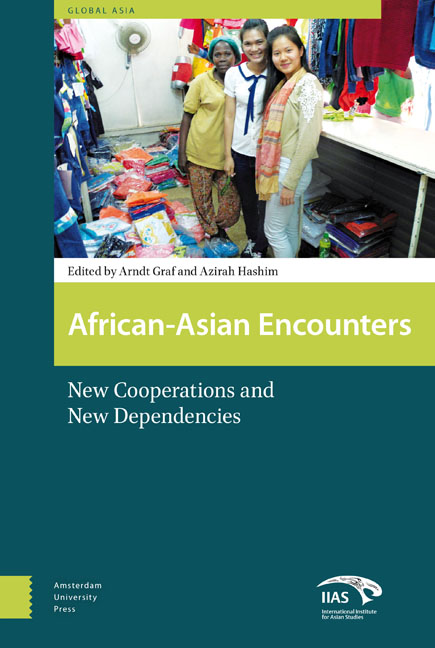Introduction
Published online by Cambridge University Press: 28 January 2021
Summary
Since the early 2000s, an increasing number of publications have focused on the new relations between China and Africa. Their research design has often been informed by political science or economics, and the more or less implied question of whether these new relations can be characterized as asymmetric. In this vein, the question of neo-colonialism has also been raised, or that of a continued structural dependency. One example of a study in this framework is Ian Taylor's Africa Rising? BRICS – Diversifying Dependency (2014). Taylor's main argument is that African exports to China almost exclusively consist of commodities, which experienced a super-cycle over more than a decade. In his argument, therefore, the basic pattern of dependency of heavily commodity-oriented African economies from the outside world did not change structurally, just because of the appearance of new customers of these commodities.
The current volume takes this sceptical perception seriously, as there is undoubtedly a strong empirical bias towards China and towards the kind of economic exchange patterns described by Taylor and others. At the same time, however, it has to be asked whether the China-Africa paradigm is suited to reflect the totality of the new interactions between Asia and Africa. Since the 1990s, not only has China been an important player in Africa, but other Asian countries, including Japan, South Korea, Malaysia, and India have also intensified relations with the continent. On the other hand, Africans are becoming increasingly visible in Asian countries. Adams Bodomo (2012), for instance, describes this new phenomenon in the case of Africans in China. Several hundred thousand Africans now live in China, constituting a new diaspora with various new patterns of intercultural encounters. Similarly, an increasing number of Africans now live in other Asian countries. This brings to attention the great variety of new interactions between the non-Chinese Asian countries and their African counterparts. In fact, focusing on interactions between ‘countries’ might obscure the fact that in China as well as in many other Asian and African countries, various players, and not only the government, are currently engaged in the new interactions between Africa and Asia. This observation casts doubt on the assumption that asymmetric relations between ‘Asia’ and ‘Africa’ are the general order.
- Type
- Chapter
- Information
- African-Asian EncountersNew Cooperations and New Dependencies, pp. 9 - 14Publisher: Amsterdam University PressPrint publication year: 2017



